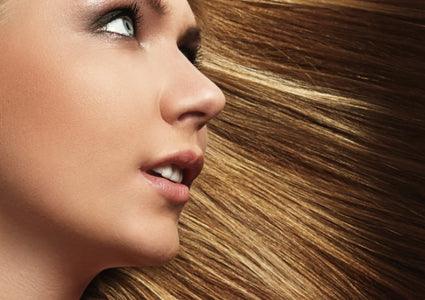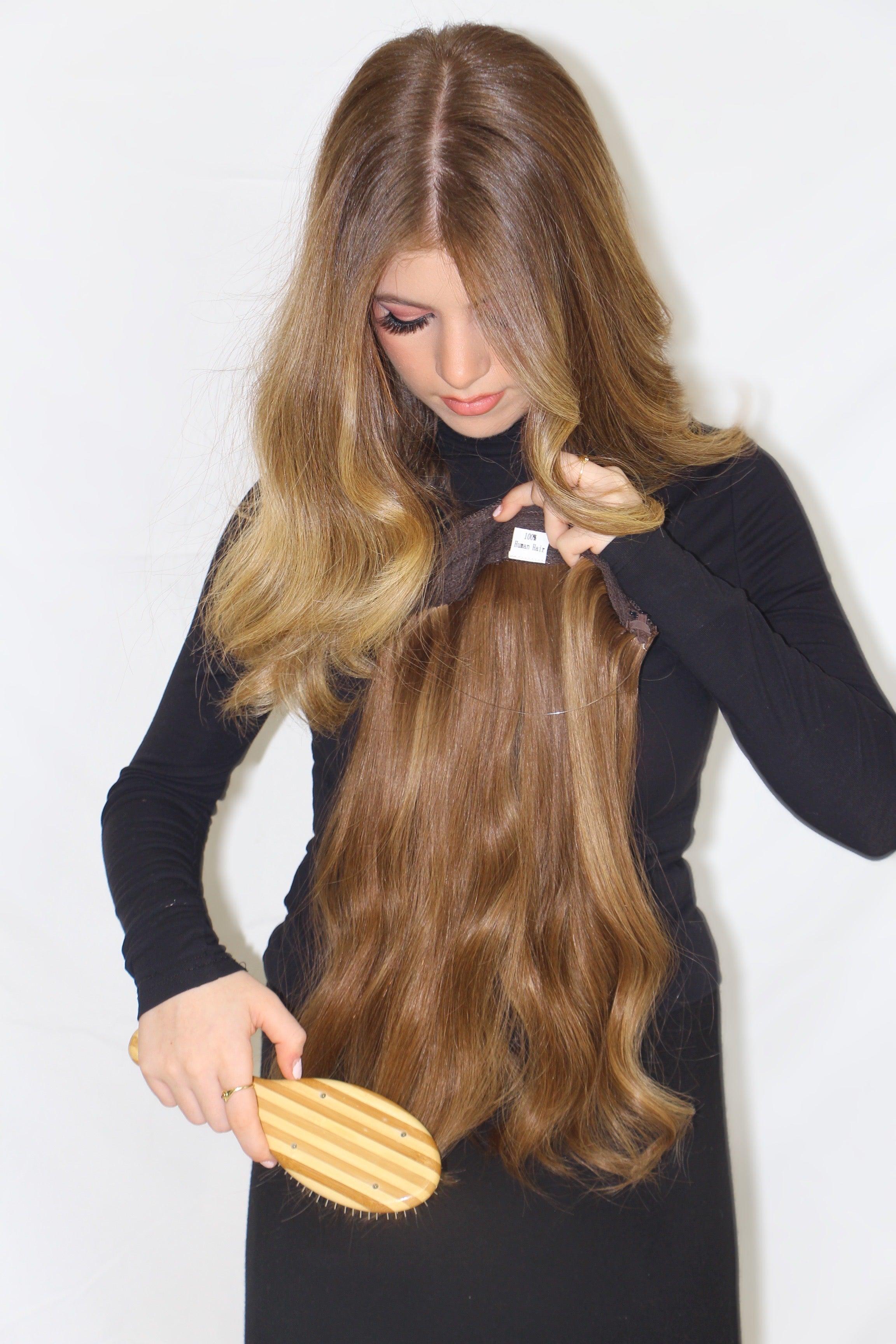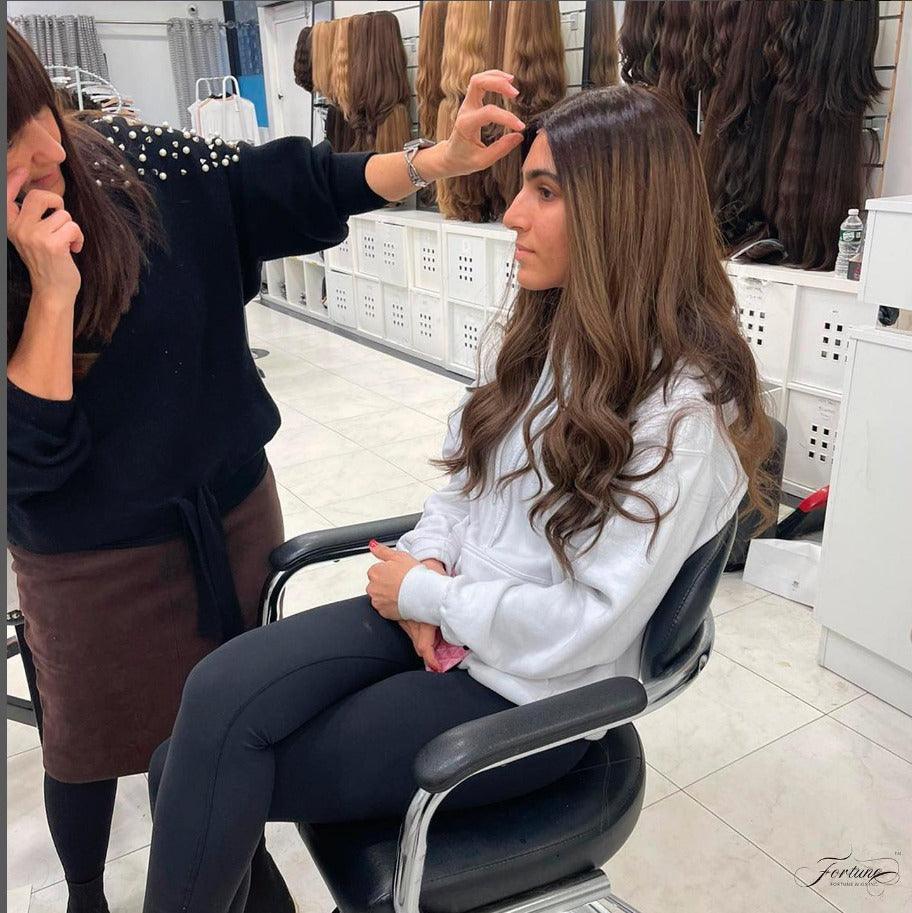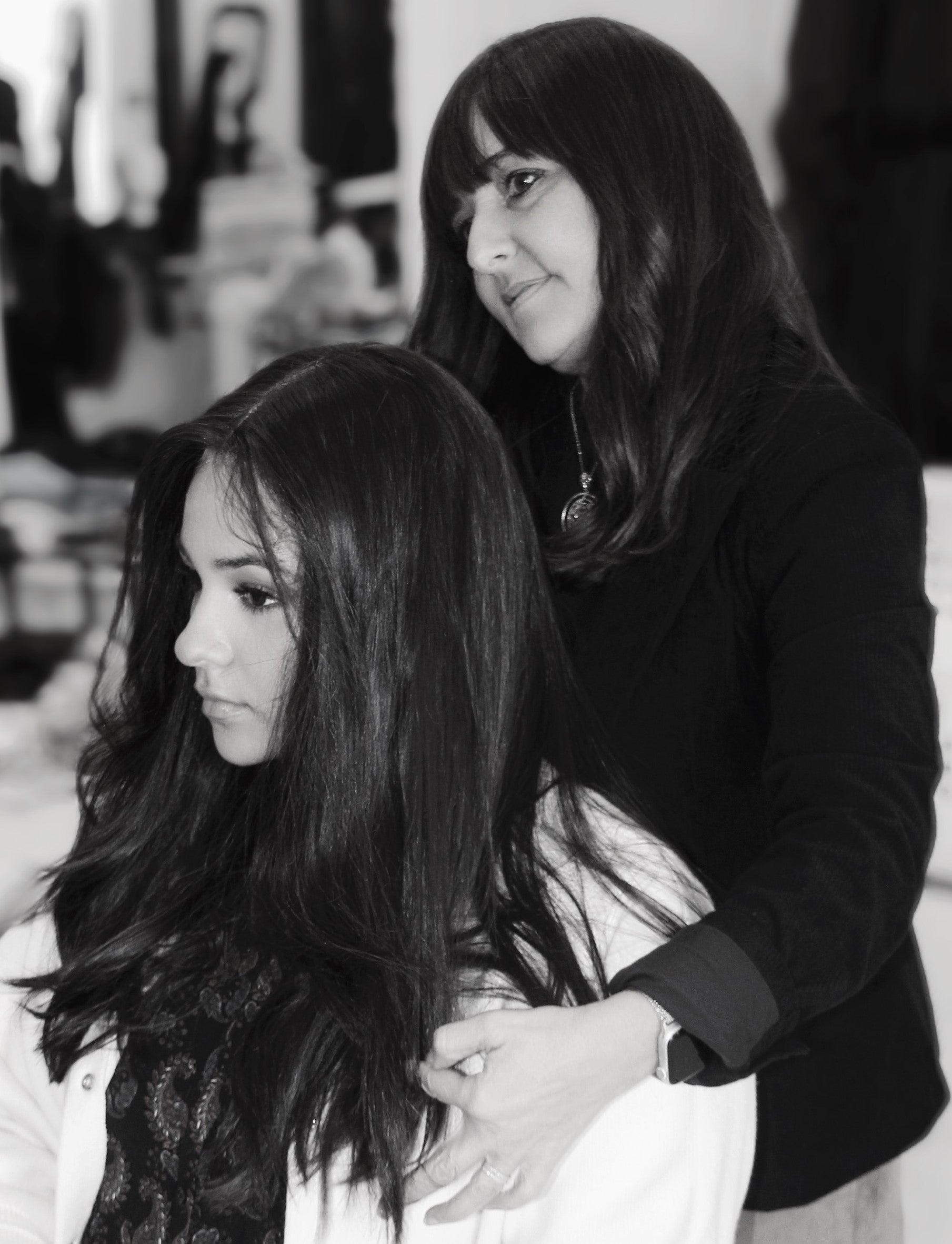- Quality Matters: Always opt for high-quality, 100% human hair products. Synthetic alternatives may be cheaper, but they lack the natural feel, durability, and styling versatility of human hair.
- Proper Installation: Wigs and extensions should be installed professionally to prevent hair damage and ensure a natural appearance. With proper guidance and tools, self-installation can also be done safely.
- Maintenance is Key: Regular care is crucial to maintaining the longevity and appearance of your hair pieces. Use a gentle, sulfate-free shampoo and conditioner, and always detangle with a wide-tooth comb.
- Heat Styling: When using heat styling tools, apply a heat protectant to prevent damage. However, limit the use of these tools to maintain the quality and health of the hair pieces.
- Regular Conditioning: Deep condition your wigs, toppers, and extensions regularly to keep them hydrated and healthy. Dryness can lead to breakage and tangling.
- Storage: Store your wigs, toppers, and extensions on a wig stand or in a box when not in use to maintain their shape and prevent tangling and damage.
- Customization: A professionally customized wig, topper, or extension can significantly enhance your look. At our salon, we offer services like custom cutting, coloring, and styling to suit your personal style.
- Scalp Care: Don't neglect your natural hair and scalp while wearing wigs and extensions. Regularly wash and condition your natural hair and use breathable caps to prevent scalp irritation.
- Coloring: If you want to change the color of your wig or extension, it's best to have it done by a professional. Incorrect coloring methods can damage the hair and lead to uneven results.
- Wig Cap Size: Ensure your wig cap is the correct size for your head. An improperly fitted wig can lead to discomfort and an unnatural look.
- Replacement: Even with proper care, wigs, toppers, and extensions will eventually need to be replaced. The lifespan of your hair piece will depend on its quality and how often it's worn and styled.
- Use of Correct Tools: Always use the right tools for styling, such as a wide-tooth comb for detangling and a round brush for blow-drying. These help maintain the longevity and quality of the hair piece.
- Reducing Shedding: High-quality wigs, toppers, and extensions are typically built to minimize shedding. However, proper handling can also contribute to preventing unnecessary shedding. Be gentle while washing and detangling.
- Preventing Tangles: Regular brushing and use of leave-in conditioners can help prevent tangles. Always brush starting from the ends and work your way up to the roots.
- Preserving Curls: For curly and wavy hairpieces, use curl-preserving products to maintain the texture. Avoid brushing curly hairpieces when dry as this can lead to frizz and loss of definition.
- Washing Frequency: Overwashing can cause your hairpiece to dry out and lose its shine. Determine the right washing frequency based on how often you wear it and the amount of product buildup.
- Styling Products: Limit the use of heavy styling products, like wax or gel, which can weigh down the hair and cause product buildup. Instead, opt for lightweight serums and sprays.
- Sleeping with Hair Extensions: Never go to bed with wet hair extensions. Always ensure they're dry and, if possible, braid the hair to prevent tangling overnight.
- Sun Exposure: Prolonged exposure to sun can cause color fading and dryness. It's advisable to wear a hat or use hair products with UV protection when under the sun for extended periods.
- Swimming with Hairpieces: Before swimming, wet your hairpiece with clean water and apply a leave-in conditioner. This helps to limit the absorption of chlorine or salt water.
- Understanding Hair Types: Different hair types (European, Asian, Indian etc.) have different characteristics in terms of texture, density, and styling possibilities. Understand these differences to choose the best fit for you.
- Heat Styling: Minimize the use of heat-styling tools on your human hair pieces. High heat can cause the hair to become dry and brittle. If you must use heat, apply a heat-protectant spray beforehand.
- Hair Coloring: It's advisable to have a professional color your wig or extensions, as at-home coloring can lead to uneven or undesirable results. Furthermore, never try to lighten a wig or extension that has been dyed dark as this can damage the hair.
- Scalp Care: Don’t forget to care for your own scalp and hair when wearing wigs and toppers. Regular cleansing and conditioning will maintain a healthy environment for your natural hair to grow.
- Ventilation: Allow your wigs, toppers and extensions to air dry whenever possible. This helps in maintaining the integrity of the hair, as blow drying can be harsh and damage the hair over time.
- Storage: Store your wigs, toppers, and extensions properly to maintain their shape and prevent tangling. Use a wig stand or mannequin head for wigs, and gently coil extensions and store them in a hair net and bag.
- Cap Adjustment: Ensure the wig cap fits snugly, but not too tight as it can lead to tension headaches and potentially damage your natural hair.
- Blend Extensions: For the most natural look, blend your extensions by having them cut and styled while you are wearing them. This ensures they integrate seamlessly with your own hair.
- Restoration Services: Over time, even the highest quality hair pieces can show signs of wear. Consider professional restoration services to bring life back into a well-loved wig or topper.
- Invest in Quality: Good quality hair pieces may have a higher upfront cost, but they offer a more natural look, greater durability, and are more cost-effective in the long run.
- Regular Maintenance: Regular maintenance is essential to prolong the life of your wigs and extensions. Just like natural hair, they need to be regularly washed, conditioned, and detangled to stay looking their best.
- Product Choice: Choose products specifically designed for human hair wigs and extensions. Regular hair products may contain ingredients that are too harsh for processed human hair.
- Avoiding Heat Damage: Always use a heat protectant when heat styling your wigs or extensions. Heat can cause damage over time, and human hair wigs and extensions can't heal like natural hair.
- Refreshing Curls: Use a spray bottle filled with water and a small amount of conditioner to refresh the curls in your curly or wavy wigs and extensions. Scrunch the hair gently to help redefine the curls.
- Preventing Tangles: To avoid tangles, never go to bed with wet hair or while wearing your extensions. If you must sleep with your extensions in, braid the hair or tie it up to prevent tangling and matting overnight.
- Fitting the Wig: Always ensure your natural hair is lying as flat as possible before putting on a wig. This will help the wig fit better and look more natural.
- Adjusting the Cap Size: If your wig feels too tight or too loose, it may need to be adjusted. Many wigs come with adjustable straps that can be used to make the cap smaller or larger.
- Using Wig Caps: Wig caps can help protect your natural hair from the friction of the wig and help keep your hair neatly tucked away.
- Applying Lace Front Wigs: When applying a lace front wig, take care to ensure the adhesive is applied correctly. Misapplied adhesive can damage the wig and your natural hair.
- Replacing Old Wigs: Be prepared to replace your wig or extensions every 6-12 months, depending on how often you wear them and how well you care for them.
- Customizing the Wig: Consider having your wig professionally styled or customized for the most natural look. A professional stylist can thin the wig, add layers, or adjust the part to best suit your face.
- Swimming With Your Wig: If you choose to swim with your wig on, always wear a swim cap to protect the wig from chlorine or salt water, which can cause damage.






